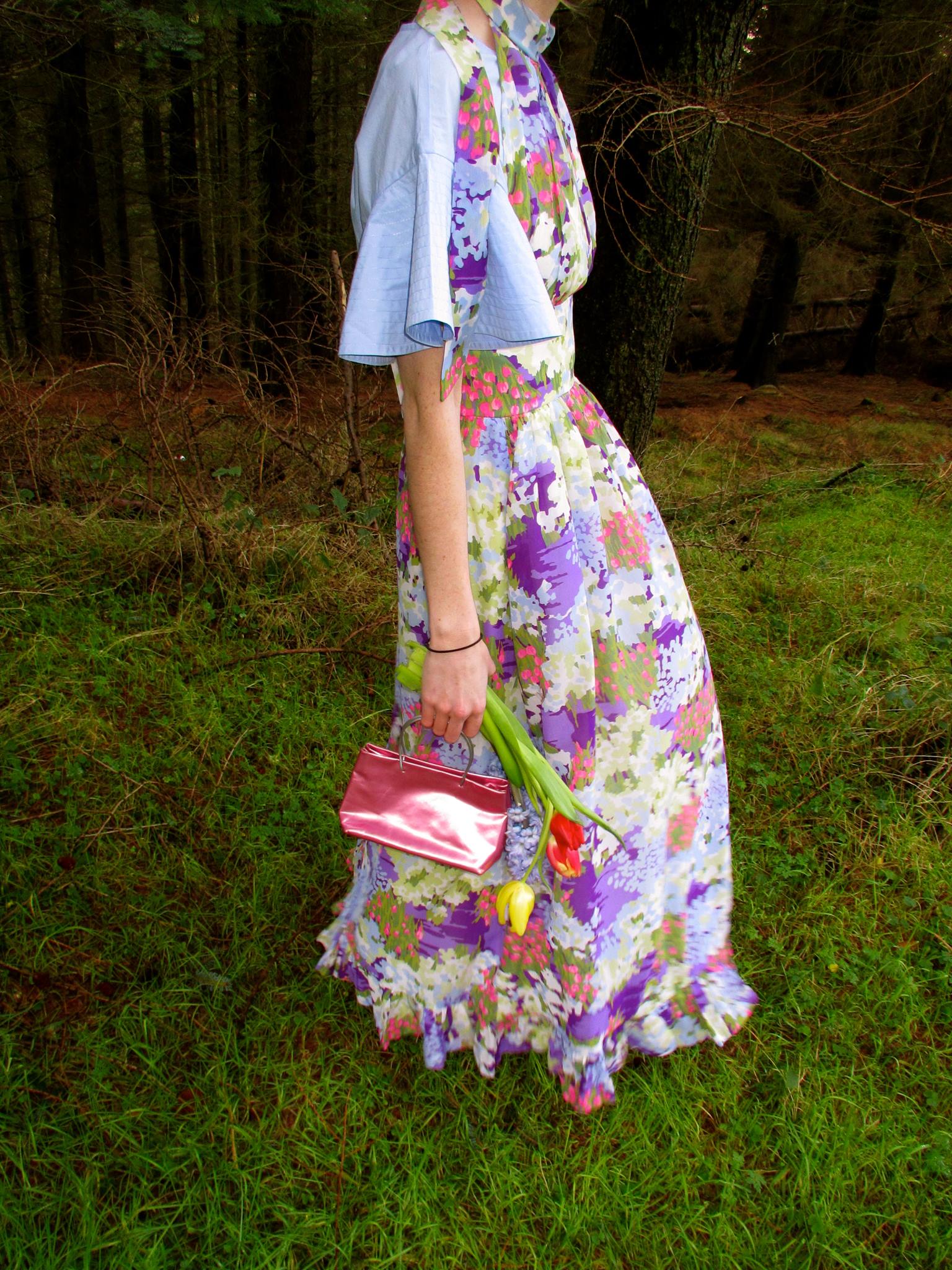THE WAY WE WORE
How dressmaking came to define Dublin’s fashion scene in the 1960s and 70s
”I have a photograph taken at home the day before I got married and I’m wearing a little bias-cut tartan miniskirt I made myself. In another, I have on a bodysuit I made for my honeymoon. It was very avant-garde and had wide pants, a round neck with straps and a zip up the back. No one was wearing anything like it at the time, I thought I was the bees-knees,” recalls Michelle Lawlor Winters, a former Irish model and student at the Grafton Academy of Dress Designing in the 1960s. Michelle is currently a tutor at the Academy today.
Dublin in those years was a seductive hub of design talent, with top Irish couturiers Irene Gilbert, Sybil Connolly, Neilli Mulcahy and Ib Jorgensen at the forefront. The Grafton Academy, founded in 1938 by Dublin-born fashion pioneer, Pauline Clotworthy, offered an exciting new career-path and ignited a renewed interest in fashion. The Irish government invested heavily in industry, with a particular emphasis on exports, resulting in a flourishing clothing trade. The country’s first shopping centre opened in Stillorgan in 1966, followed by an even bigger one in Cornelscourt. A new generation was born, who devoured British Vogue and Harper’s Bazaar, avidly following the fashions from Paris and London. In 1966, Irish fashion magazine Miss featured Miss Ireland and Miss World runner up Gladys Waller on the cover, dressed in a red Emcar suit, white patent leather boots and a Pompadour handbag, all from Brown Thomas. Dublin was slowly turning from black and white to a chic technicolour.
Shopping was an art in itself – as a student at the Grafton Academy, Michelle would shop first and foremost for materials. Switzers, Brown Thomas, Clery's and Arnotts were the best places to uncover beautiful fabrics. Couturiers Ib Jorgensen and Irene Gilbert coupled with high-end stores, Richard Allen, Arnotts, and Brown Thomas formed the centre of this fashion revolution, and so of course, did the dressmakers themselves. According to my Granny, in the lead-up to a special occasion (the annual company dinner where my Grandad worked was a yearly highlight involving high glamour and sparklers), a few weekends were spent consulting with her dressmaker Eibhlin on patterns (found mostly in Hickeys and chosen from Vogue Pattern books), materials (again from Switzers or Hickeys) and getting fitted for the dress itself. This was a creative and very personal collaboration between woman and dressmaker, involving individual style and taste. As opposed to choosing a dress off the rail in Arnotts, for my Granny, it was important to her that she had choice, while also being involved in the design process itself. For her and so many women in Ireland at the time, 'the dressmaker' was an essential part of Irish life.
For Michelle, it was her experience working with the great Irene Gilbert that shaped her career as a designer. “She was one of the greats, Sybil Connolly, Ib Jorgensen, and herself. As a junior learning about couture, every second morning I would dress the window (she had a stylish salon in Stephen’s Green with the most beautiful windows). I used to be a nervous wreck doing it but I was alright once I got the hang of it. The first thing she would do every morning was check the window, so it had to be perfect. It would either be a beautiful evening dress, suit or coat with hat, matching gloves and bag. Everything would have to be absolutely precise and we all wore little black dresses in the salon. Irene’s clients would come in for a consultation and sometimes I would model the clothes. Mr. Purcell would come down from the tailoring room with various swatches of fabric and there was a milliner called Martin that she used. A lot of clients would come back again and again so she’d know what they liked.”
Recently, my Granny gave me two of her favourite dresses from this time, both made by her dressmaker, Eibhlin. Each are beautifully made and define my Granny’s distinctly feminine and timeless style. Evocative of an impressionist painting, they fuse vivid florals and elegant, simple shapes and, with a modern injection, remain just as vibrant and relevant as they did back in the late 1960s.
PHOTOGRAPHY: Christina Higgins
First Look: Multi-coloured floral halter-neck dress, by Eibhlin, sky blue top with ruffled sleeves, H & M, mint green faux fur coat, Om Diva, pink sheer socks, Cos, silver sandals, & Other Stories, pink metallic handbag, vintage DKNY, purple fluffy earrings, Om Diva.
Second Look: Purple and coral floral dress, by Eibhlin, red ribbed polo neck, Marks and Spencer, pink sheer socks, Cos, silver brogues, Zara, green and purple ceramic necklace, Ceraselle @ The Guinness Gallery, red leather handbag, 60s vintage.















